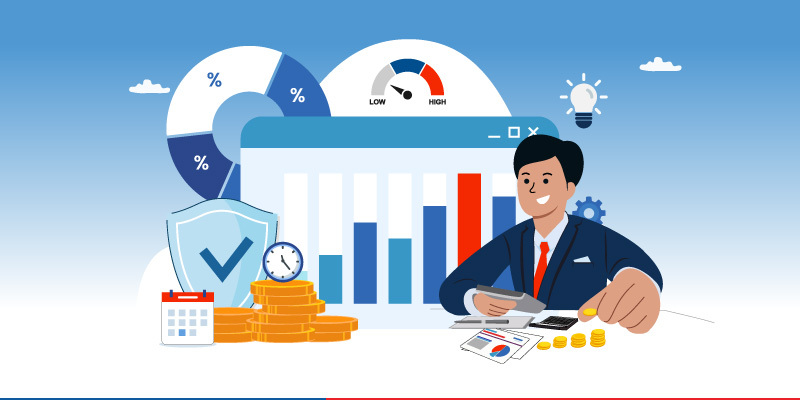Many investors feel uncertainty when placing money in different markets since every decision carries the possibility of gain and loss yet spreading investments across various categories can reduce this pressure bringing balance to overall results and supporting steady progress over time. At Seed Finserve we believe each person’s plan should reflect personal aims, available resources and the degree of change they can accept in portfolio value so this discussion explains the meaning of diversification the value it offers and the way to apply it gradually in real conditions.
1. Why Diversification Matters
When investments remain in a single category they tend to rise and fall together which means one negative period can cause large damage to wealth but mixing different categories changes this pattern where the movement of one group may be very different from another making losses in one area less damaging. Over many years this difference in movement reduces sharp swings and brings a smoother journey toward the desired target.
Think of a farmer planting several crops rather than just one since any sudden weather change or pest problem would hurt only part of the field and the remaining crops would still provide harvest. In the same way a mixed portfolio can keep growing even during difficult seasons for certain assets offering mental comfort and practical stability.
2. Identify Your Financial Goals and Risk Tolerance
A clear picture of personal needs comes before choosing any instrument for investment because different goals require different levels of growth and safety. Some people save for a wedding or home within a few years, others want income during retirement decades away while many plan for several milestones together.
The length of time available and the amount of uncertainty one can accept will influence how much to place in shares, debt instruments, real assets or ready cash. People who lose sleep over sudden declines might keep a larger share in safer categories while those who accept short-term falls for higher potential gains may hold more shares.
3. Choose Your Core Asset Classes
A balanced plan contains several broad types of assets each playing a different role in overall performance.
a. Equities (Shares)
Shares represent a part of ownership in a business which means they can grow strongly when the business performs well yet they also carry the chance of sudden loss when conditions change.
b. Fixed Income
Debt instruments like bonds provide regular interest and are less sensitive to economic swings compared to shares.
c. Alternatives and Real Assets
Items like property gold and commodity based funds can move differently from shares and debt.
d. Cash and Cash Equivalents
Money in savings accounts or short-term deposit instruments provides instant access for emergencies or sudden opportunities. This portion also serves as a stabilizer when markets move sharply.
4. Use Funds or ETFs to Simplify Diversification
Selecting and following many individual instruments can consume time and attention so pooled products such as mutual funds or exchange traded funds provide exposure to several securities at once where broad market index funds hold shares from a complete market index creating automatic variety. Bond funds contain different maturities and issuers lowering the impact of default from any one borrower. Thematic funds focus on a single idea yet still hold multiple instruments within that idea.
At Seed Finserve advisors study the needs of each client before suggesting such products aiming to match every choice with risk capacity and financial purpose.
5. Sample Diversified Portfolios
Different levels of risk comfort lead to different weightings between categories. Here is a general outline for three sample approaches though real-life plans should match exact personal details.
| Risk Profile | Equities | Bonds / Fixed Income | Alternatives / Real Assets | Cash |
| Conservative | 40% | 40% | 10% | 10% |
| Balanced | 60% | 25% | 10% | 5% |
| Aggressive | 80% | 10% | 5–10% | 0–5% |
For example, a balanced approach may hold thirty percent in an Indian equity index, twenty percent in global equity funds, twenty-five percent in domestic government or corporate bonds, ten percent in gold or property trusts, five percent in liquid debt instruments and the rest in cash for sudden needs.
6. Rebalance Regularly
Over time growth in one area can change the intended ratio between categories so rebalancing returns them to original levels. If shares grow much faster than bonds the equity portion may exceed the target creating more risk than planned. Selling part of the excess and buying more of the underweighted category brings balance back. This habit requires discipline and sometimes goes against emotion because it means selling items that performed well and buying those that did not yet it supports steady risk control.
7. Tax Efficiency and Cost Management
In India returns from various instruments are taxed differently and expenses also reduce net returns. Holding equity-oriented funds for more than a year receives a lower tax rate than short-term holdings. Contributions to certain schemes like PPF may reduce taxable income under current rules.
Low-cost products especially index funds and many ETFs leave more return in the investor’s pocket. Even small cost differences can create large gaps over long periods so checking expense ratios before choosing is wise.
8. Monitor Learn and Adjust
Portfolios need periodic review to compare actual performance with expectations. Market movements, changes in interest rates or shifts in global trade may influence how each category behaves. Personal situations also change—marriage, children , career shifts or nearing retirement can lead to new needs.
9. Get Started with Seed Finserve
The first step is defining the purpose for each investment then comes measuring comfort with uncertainty and setting a mix between growth assets, income sources, tangible stores of value and liquid reserves. Choosing the right products for each part, applying them with discipline and following progress steadily forms the base of lasting growth.
At Seed Finserve the process includes personal discussion, detailed analysis and guidance in execution. Whether the goal is protecting savings, growing wealth or preparing for future needs, a plan shaped to the person’s own circumstances can bring better results than random action.
Final Thoughts
A portfolio holding several asset types stands stronger against sudden shocks than one depending on a single idea and it can support steady progress toward long-term targets and this method works best when linked to personal aims adjusted for changing life events and supported by consistent observation. By combining care in design with ongoing attention an investor builds not just a set of holdings but a structure capable of surviving change and using time as an ally turning small steps into meaningful progress.

